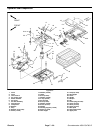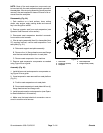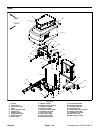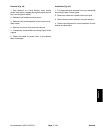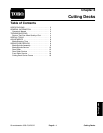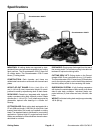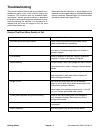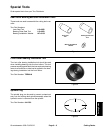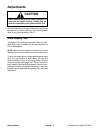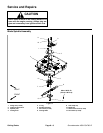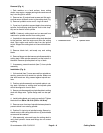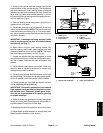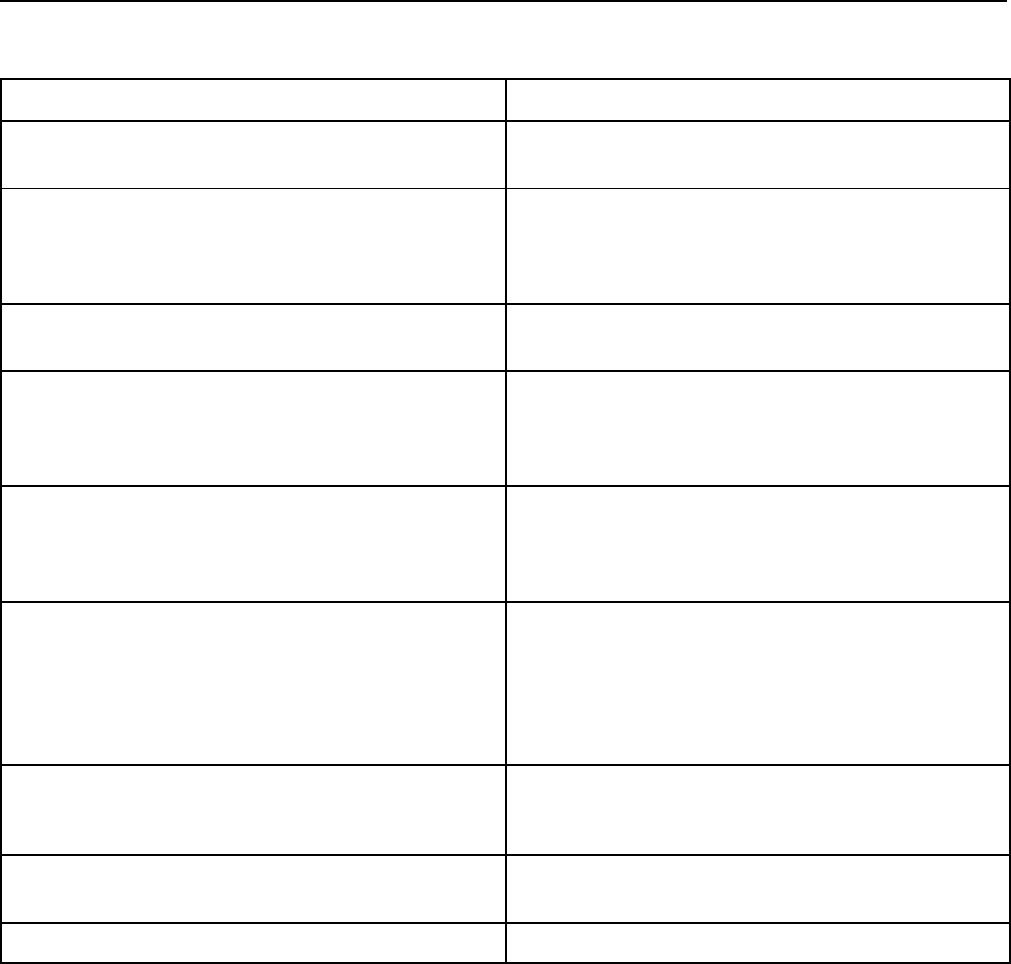
Groundsmaster 4500--D/4700--DCutting Decks Page 8 -- 4
Troubleshooting
There are a number of factors that can contribute to un-
satisfactory quality of cut, some of which may be turf
conditions. Turf conditions such as excessive thatch,
“sponginess”, uneven ground conditions or attempting
to cut off too much grass height may not always be over-
come by adjusting the machine. It is important to re-
member that the lower the height--of--cut, the more
critical these factors are.
Remember that the “effective” or actual height--of--cut
depends on cutting deck weight, counterbalance setting
and turf conditions. Effective height --of--cut will be differ-
ent than the bench set height--of--cut.
Factors That Can Affect Quality of Cut
Factor Possible Problem/Correction
1. Maximum governed engine speed. Check maximum governed engine speed. Adjust
speed to specifications if necessary.
2. Blade speed. All deck blades should rotate at the same speed.
See items in Troubleshooting Section of Chapter 4 --
Hydraulic System.
3. Tire pressure. Check air pressure of each tire. Adjust to pressures
specifiedinTractionUnitOperator’sManual.
4. Blade condition. Sharpen blades if their cutting edges are dull or nicked.
Inspect blade sail for wear o r damage. Replace blade if
needed.
5. Mower housing condition. Make sure that cutting chambers are in good condition.
Keep underside of deck clean. Debris buildup will
reduce cutting performance.
6. Height--of--cut. Make sure all cutting decks are set at the same
height--of--cut. Adjust cutting decks as specified in the
Cutting Deck Operator’s Manual.
Adjust height--of--cut setting to remove only 1 inch (25
mm) or 1/3 of the grass blade when cutting.
7. Cutting deck alignment and ground following. Check l ift arms and cutting deck pivot linkages for
wear, damage or binding. Also inspect for bent or
damaged pivot shafts.
8. Roller condition. All rollers should rotate freely. Replace bearings if worn
or damaged.
9. Grass Conditions. Mow when grass is dry for best cutting results.



